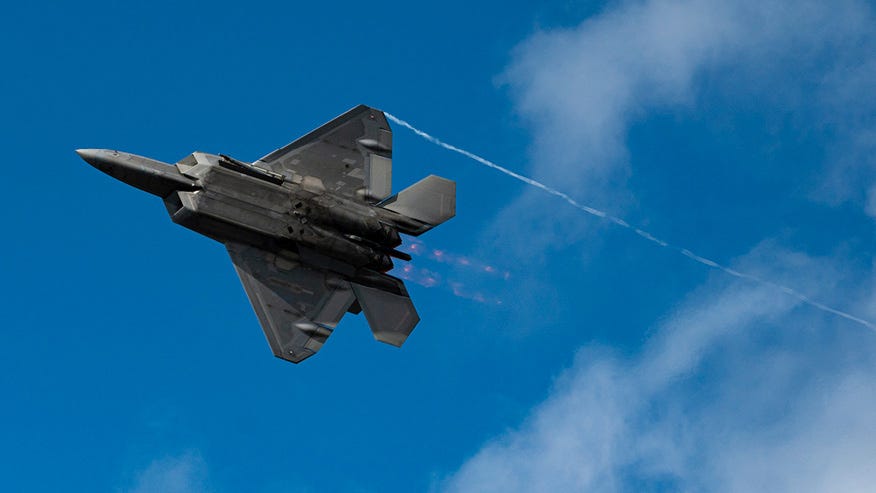The Week in Quantum Computing, August 25th
Issue #250
250 Editions of the Quantum Computing Pirates Newsletter!
To celebrate the 250 edition the pirate is going full fashion designer. Since the great podcast I had with my friend and bandmate Thomas Ehmer on all things entangled, I wanted to mix quantum and music. (See podcast here: https://open.spotify.com/episode/3RsZntKfy9CAWnVkGKC3Aj?si=8p8iV9crSaanoVcKN8R6NQ)
I am creating a limited edition of famous physicists and music with terrible puns like the ones you can expect in this newsletter. If you are interested send me a thumbs up or send a note! You can try to get the full collection!
(More info on links to buy soon)
Now, to the actual content
Quick Recap
Big government defence funding alert! Silicon Quantum Computing secured a seven-figure contract with the Australian Department of Defence for its Watermelon quantum chips. Q-CTRL received a A$38 million award from DARPA, backed by Lockheed Martin, to further quantum sensors for GPS-denied navigation. Cleveland Clinic launched a new round of its Quantum Innovation Catalyzer Program, offering healthcare startups access to IBM’s Quantum System One and potential investments up to $250,000 each. The EU's QCDC project is advancing cloud access for researchers to European trapped-ion quantum computers, leading consortia including AQT, QC Ware, Covestro, and Boehringer Ingelheim. IBM and AMD announced a partnership to combine quantum and classical high-performance computing for scalable, open-source "quantum-centric supercomputing," targeting fields from drug discovery to logistics. Quantinuum, alongside major institutions, detailed advances in tensor network techniques for simulating quantum systems and error correction. A quantum memory array that demonstrates reliable storage/retrieval of quantum information. Also the first quantum signal transmission using standard Internet Protocol by the University of Bristol.New records in gate fidelities (exceeding 99.9%) achieved with geometric quantum gates in germanium-dot qubits. Algorithmic progress was also highlighted by the SqDRIFT method, enabling scalable quantum chemistry calculations on current NISQ devices.
The Week in Quantum Computing
SQC inks multi-million dollar Defence quantum contract
Silicon Quantum Computing, founded by former Australian of the Year Michelle Simmons, has secured a seven-figure contract with the Australian Department of Defence to deliver its Watermelon quantum chips. Manufactured in Sydney, the Watermelon units integrate quantum and classical processors to accelerate AI development. The contract marks SQC’s transition from eight years of R&D towards commercialization. Simmons emphasized the importance for quantum companies to operate as commercial enterprises as well as scientific leaders, stating, “Learning how to win contracts, onboard organisations and deliver value is part of the journey of becoming a big enterprise ourselves.” This deal signifies a notable step for SQC in aligning deep-tech innovation with defence and enterprise needs in 2025.
We are not just catching up to classical computing, we are evolving from it
Quantinuum, in collaboration with institutions including the University of British Columbia, Caltech, NASA, Google Quantum AI, NVIDIA, JPMorgan Chase, and others, has released a detailed overview highlighting the impact of tensor networks in quantum computing as of August 2025. Led by Dr. Reza Haghshenas, a renowned tensor network specialist, the team emphasizes the significance of tensor networks for simulating quantum computers on classical hardware, accurately capturing entanglement, and driving advances in quantum error correction. Quantinuum’s efforts also include developing quantum versions of classical tensor network algorithms and accelerating their utility with GPU-based tools. This collective research indicates accelerating progress in leveraging classical algorithmic advances to push the boundaries of quantum computing performance and error detection.
IBM and AMD Join Forces to Build the Future of Computing
IBM and AMD announced a partnership on August 26, 2025, to develop "quantum-centric supercomputing," aiming to integrate IBM’s quantum technology with AMD’s high-performance CPUs, GPUs, and AI accelerators. This collaboration targets scalable, open-source platforms to solve complex problems in areas like drug discovery, materials science, and logistics, leveraging the strengths of both quantum and classical computing. Initial demonstrations combining IBM’s modular Quantum System Two and AMD hardware are planned for later this year, with real-time error correction and new hybrid quantum-classical algorithms as focal points. The alliance builds on IBM’s prior integration with RIKEN and industry partners, and AMD’s hardware powering the Frontier and El Capitan supercomputers, signaling intensified convergence of quantum and classical architectures in 2025’s computing landscape.
ICFO Quantum memory array brings us closer to a quantum RAM
Researchers have developed a quantum memory array, marking a significant step toward realizing quantum RAM. The team created a system capable of storing and retrieving quantum information, demonstrating reliable memory operations across an array of qubits. This advancement addresses a major hurdle in quantum computing: scalable, stable quantum memory for error correction and practical algorithms. With growing emphasis on robust quantum hardware in 2025, this breakthrough moves quantum computers closer to functioning as general-purpose machines rather than just research prototypes
DARPA Selects Q-CTRL to Develop Next-Generation Quantum Sensors for Navigation on Advanced Defense Platforms
DARPA has awarded Q-CTRL A$38 million (US$24.4 million) under its Robust Quantum Sensors program to develop next-generation quantum sensors for navigation in advanced defense platforms, leveraging their field-validated quantum sensing and proprietary AI-powered software. Lockheed Martin joins as subcontractor, contributing GPS and quantum expertise. Q-CTRL's Ironstone Opal navigation system recently demonstrated up to 111x greater positioning accuracy than conventional inertial navigation when GPS was unavailable, and was validated in maritime and aerial trials. Q-CTRL's initiatives align with broader interest from USGS, NASA, and others exploring quantum sensors for mineral detection and navigation in GNSS-denied environments.
High-fidelity geometric quantum gates exceeding 99.9% in germanium quantum dots
Researchers led by Yu-Chen Zhou and colleagues, publishing in Nature Communications (August 2025), report achieving high-fidelity geometric quantum gates exceeding 99.9% in single-hole spin qubits in germanium quantum dots. Control fidelities measured via gate set tomography reached 97.48% for the I gate, and 99.81% and 99.88% for X/2 and Y/2 gates, respectively. Introducing nonadiabatic geometric quantum computation, the team demonstrated noise-resilient geometric gate operations, maintaining fidelities above 99% across varying Rabi frequencies and withstanding detuning up to ±2.5 MHz. These results indicate geometric quantum computation may address key challenges in realizing uniform, robust, high-fidelity qubit control, marking a notable advance for fault-tolerant semiconductor quantum computing in the NISQ era.
Paper: Quantum chemistry with provable convergence via randomized sample-based quantum diagonalization
Samuele Piccinelli and collaborators present SqDRIFT, a new algorithm that advances quantum chemistry on quantum computers by combining Sample-based Krylov Quantum Diagonalization (SKQD) with the qDRIFT randomized compilation technique. Unlike SKQD—which is limited on current quantum devices by circuit depths required for time evolution—SqDRIFT preserves SKQD’s provable convergence while enabling calculations on chemical Hamiltonians at utility scale. The team applied SqDRIFT to compute the ground-state energies of polycyclic aromatic hydrocarbons, reaching system sizes that are inaccessible to exact diagonalization. This work addresses a central technical bottleneck and demonstrates tangible progress toward performing practical quantum chemistry tasks on near-term quantum hardware, underscoring how randomized techniques can enhance quantum algorithms under current hardware constraints.
Engineers send quantum signals with standard Internet Protocol
Engineers have, for the first time, transmitted quantum signals using the standard Internet Protocol, marking a technical milestone for quantum networking. This work was achieved by a team at the University of Bristol in the UK. By enabling quantum information to travel using widely adopted IP standards, their approach promises greater compatibility with existing internet infrastructure. The experiment successfully sent quantum keys over a fiber network using IP packets instead of specialized quantum protocols. As quantum networks continue to develop in 2025, this demonstration highlights a move toward integrating quantum systems with classical networks, potentially easing the deployment of quantum-secure communication technologies.
EU gives unprecedented access to quantum computers accelerating next-generation technology
The EU, through the QCDC (“Quantum Computers for Datacentres”) project funded by the European Innovation Council, has granted researchers unprecedented cloud-based access to European trapped-ion quantum computers. This initiative enables advanced tasks in areas like biochemical research, computational fluid dynamics, and industrial process optimization. Key players include Alpine Quantum Technologies (AQT), QC Ware, Covestro, and Boehringer Ingelheim, who collaborated to simulate molecular interactions in the Nitrogen Cycle using the Variational Quantum Eigensolver algorithm on NISQ devices. While current quantum devices still do not outperform traditional supercomputers, these proof-of-concept achievements signal a significant acceleration in applied research and industry innovation using European quantum capabilities in 2025.
Cleveland Clinic Launches New Round of Quantum Innovation Catalyzer Program
Cleveland Clinic announced a new round of its Quantum Innovation Catalyzer Program, offering start-ups a 12-month immersive opportunity to research quantum computing applications in healthcare. Up to four selected companies will access IBM’s Quantum System One—the first quantum computer dedicated to healthcare research—on Cleveland Clinic’s main campus, and may receive up to $250,000 investment each from K5 Tokyo Black Fund plus a Cleveland Clinic match. Past participants include Qradle, which achieved a complete end-to-end, biologically relevant protein structure prediction pipeline on real quantum hardware, surpassing AlphaFold 3 in accuracy, and Algorithmiq, now a finalist in Wellcome Leap’s Quantum for Bio Challenge for photon-activated cancer drugs.
Quantum Research Sciences developing AI platform to help Air Force more efficiently connect with industry
Quantum Research Sciences, in partnership with Purdue University’s Rosen Center for Advanced Computing, has secured a U.S. Air Force contract to create ACID-R—an AI-driven platform to streamline access to commercial technologies for defense applications. The system enables automated extraction and organization of vendor data, improving efficiency in reviewing technology proposals critical to platforms like the F-22 Raptor. RCAC’s Laura Theademan calls this Air Force project “the largest and most significant yet” in their collaborations. QRS previously developed the Department of Defense’s first operational quantum software, working with Purdue’s Andreas Jung and the Jung Research Group. QRS aims to further integrate its quantum and AI expertise to accelerate defense modernization efforts.
Researchers Develop Web-tool To Estimate When Quantum Computers Outperform Classical Systems
A team led by Frederick Mejia, Hans Gundlach, and Jayson Lynch at MIT’s FutureTech Lab has launched a publicly available web tool, the Quantum Economic Advantage Calculator, to estimate when quantum computers will outperform classical systems for specific computational problems. This tool models the effects of technical factors such as error correction, gate speed, and qubit connectivity, based on current hardware like IBM Quantum, IonQ, and QuEra. Their analysis projects that, if trends continue, IBM’s superconducting hardware could break 2048-bit encryption around 2034, but only with sustained annual improvements in qubit quality and error correction overhead. This resource enables clearer, comparative roadmaps for quantum vs. classical computing and exposes the engineering hurdles facing large-scale quantum advantage.




